
Clyfford Still at SFMOMA
“Space and light and order. Those are the things that men need just as much as they need bread or a place to sleep.”
Le Corbusier
“The fact that a work of art has a politically radical content therefore does not assure its revolutionary value. Nor does a non-political content necessarily imply its irrelevance to revolutionary action. It is in the larger context of the social movement and its positive historical results that the practical significance of partisan art has to be judged.”
Meyer Shapiro
“If that’s art, I’m a Hottentot.”
Harry S. Truman
I like this photo of Still’s painting at the SF Modern. One feels the presence of that painting. Still was a bit of an outsider to the Abstract Expressionist movement; if one thinks of the big three (or four perhaps) as Pollock, Rothko, and DeKooning, with maybe Franz Kline as the fourth. He was part of the next group, Newman, Motherwell, Gorky and Gottleib. But unlike Gottleib, he was only a visitor to the New York scene. I happen to love Newman, and Still bears some resemblance to Newman, and both inspired in viewers a kind of awe; like the feeling you get looking into the Grand Canyon, as someone wrote. Born in Grandin, North Dakota in 1904, he studied at Washington State and taught on the West Coast mostly, though for a time at VCU, too. Still also painted differently than most of The New York School painters. He applied a thick impasto, and worked with a palette knife, not brush usually, and he created the very largest canvases of any Ab Ex painter. Now I think Still suffers some because he painted a lot of less than great work. In fact more mediocre work than anyone else. And he created a LOT of work. But in his best work there is something undeniably grand, majestic, willfull. Self conscious yes, and with a sort of manufactured heroism and an arrogance, but amid that, Still was a brilliant colorist. I dont think he gets enough credit for that. His blues, reds, yellow, and pinks are wonderous. And they are singularly his. If one sees a Still ‘blue’, you know its a Still blue. He is finally redeemed by his colors.

Clyfford Still “1944”.
The painting “1944” is singled out frequently as representative of the work he did during his best period. Still was also influential. Pollock said he was the best of any of the Ab Ex painters (save for himself of course) and Newman clearly borrowed from him.
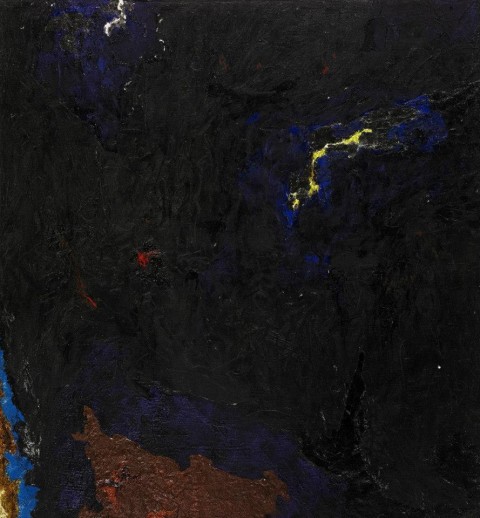
Clyfford Still, “1948”.
One sees certain things about many of the Ab Ex painters looking at them now. The first is, as I’ve said before, sincerity. Belief in, it seems, either a spiritual/existential practice, or an unconsicous pursuit of Universal primal truth, or of origins perhaps. The spiritual resolution was best personified by Rothko, and the unconscious Id was Pollock. Newman was a spiritualist, and Still was, too, finally. Kline another Id painter, and DeKooning. Gottleib was a spriritualist. The paradox perhaps is that decades later the sense of collectivity that was the implication of all these painters, had been subsumed by the Clement Greenberg’s invention of Ab Ex as “american individualism” (and thanks in part to the CIA, whose influence while minor, was still not insignificant).
I think its important, actually, to re-think the Abstract Expressionists today. In 1940, Pollock was just getting out of New York State Hospital in Westchester, where he had been treated for severe alcoholism and incapacitating depression. The work he did upon release marked the start of his abstract painting. Pollock suffered depression for the remainder of his life and was only intermittently sober. Donald Kuspit wrote:
“Paradoxically, it is their aura of destructiveness and catastrophe — unrelenting violence — that makes the paintings innovative and gives them staying power. Ironically, Pollock’s art, which gave him a temporary sense of identity — Arloie noted that after a binge, and after enduring another bout of depression, he was able to paint and draw with remarkable concentration and intensity, at least until the cycle of binge and depression recurred — demonstrates his otherwise complete lack of identity, or at least his deep insecurity and annihilative anxiety. It was as though Pollock had been dismembered — or had never come together — in the remote prehistory of his childhood, and that, however much he attempted to put himself together (create himself, as it were), by the creative act of making art, he could only futilely re-enact and ritualistically repeat, in artistic terms, his dismemberment.”
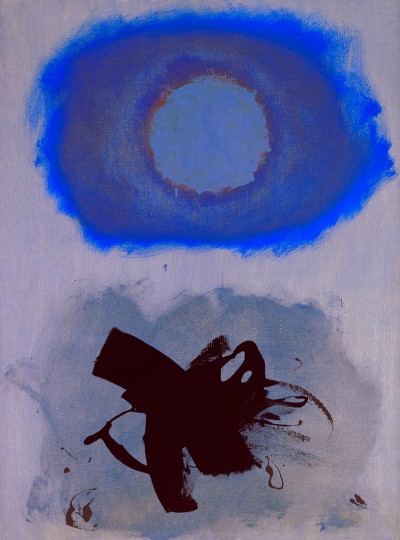
Adolph Gottleib
Kuspit again;
“Abstract Expressionism has been socially assimilated and institutionalized since its heyday, but that does not mean that its transcendental ambition has been understood and appreciated. It is doubtful that American society can tolerate the sense of “silence and solitude” — Rothko’s words — that informs and sustains the best Abstract Expressionist art. Its aura of “human incommunicability,” as Rothko called it, had to be intolerable to a busily communicating society. Abstract Expressionism has been dipped in a sea of ordinary language, as though that could purge it of its ineffability, and make us forget its mystery. But until the incommunicability of what it struggles to communicate is recognized, Abstract Expressionism’s extraordinary character cannot be truly grasped. “
Its worth noting again, that the U.S. Information Service (CIA and State Dept) appropriated the Ab Ex painters and repurposed them as symbols of American individualism and of heroism. Kitsch biographries were invented, and the previously derided New York abstract painters were suddenly on the cover of TIME magazine. None of that changes the essential mystery and almost sacred ritualized project of this relatively small group. This is work that cannot be comprehended; it is difficult and untranslatable. And Gorky and Gottleib both made paintings that looked like hieroglyphs, but in an unknown anti language. The attempted domestication of this art was both successful and unsuccessful. Rothko frequently complained of the art market, Still hated it, and Pollock simply couldn’t deal with any of it. This was magical art, mysticism, and romanticism. But it wasn’t manipulative, and it wasn’t intended for easy consumption. There is no irony.
The cultic quality of *genius* at work was certainly not resisted by any of these artists. There is something theatrical in this work, too, and in the individuals as well. Perhaps nothing quite this monumental and of such hubris has been attempted since. This was myth making, on aesthetic terms, but also in personal terms. Most importantly, this was collectively a radical vision, in all senses of that word.
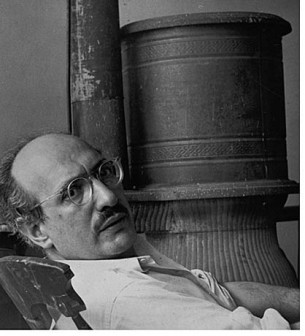
Mark Rothko
There is a sexual energy in all of these painters. An erotic dream of fertility and Dionysian granduer. It is counter-Puritan. But there is also a profound and bottomless despair. For the search cannot be fulfilled. That Dionysian urge is obliterated. World wars, and soulless wage slavery. There is something anti social in this work, too. And yet, it is closer to anti materialist, anti capitalist, anti conformist. The personal trauma is made into a reflection of social trauma. Post WW2, post holocaust, post Hiroshima finally, eventually. All of these men were born in the first decade or two of the 20th century. They were the witnesses to mass industrial slaughter, of organized efficient killing. Warhol’s electric chair turns execution into a shiny commodity. The work of Pollock, Gorky, Motherwell, Kline, and the rest was an ‘expression’ of what that electric chair actually means. The social place for capital punishment, for Imperialism, for war can be read in the titles of their work: “Elegy to the Spanish Republic”, “Agony”, “Conflict”, “Stations of the Cross”, “Cataclysm”, “Memoria in Aeterna”, etc. The narrative of Rivera was radical, but the form of the narrative far less so. Here, as Adorno said, it was in the form not the opinions of the work, that radical potential was to be found. These were artists obliterating the idea of form itself.
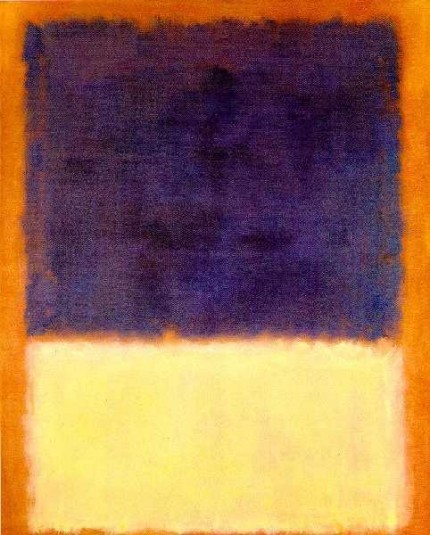
Mark Rothko
Pollock’s work is melancholy. It is also angry. All of these painters, even Rothko, the most sublime, expressed anger at an increasingly irrational world. There is nothing ornamental in these paintings. Motherwell said, clearly, it was mysticism. Kline said nothing was meant to be interpreted. Many painted emblems, pictograms, and often repeated ad infinitum the same ur-forms. Like Chinese and Japanese calligraphy, each painting was a biography. But it was not JUST a biography, it was a refusal of biography. Pollock suffered an abusive controlling mother and an absent alcoholic father. His own de-socialization caused he bouts of depression. Many were European Jews, alienated, marginal, others came from prarie or western lands, empty, big sky country, working class and they saw themselves as workers. In today’s fashionable left leaning critics, this is seen as self conscious. Such observations betray more these critics own white bourgeois pretensions when faced with the actual working class. The work was not meant for polite society and it became an enduring irony that Ab Ex painters became so famous, and shown in the most exclusive circles, and today a Clyfford Still would cost you about 7 million dollars. Rothko and Pollock even more. But the actual vision was not elite, it was not a pose, it was the last genuine avant garde moment in western art.
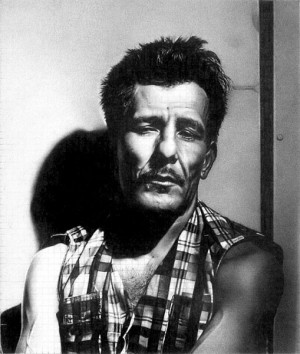
Franz Kline
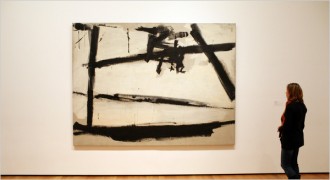
Kline, at MOMA
From an excellent article on critic David Craven:
“Craven insists that among the Abstract Expressionists’ various political beliefs, one of the most forceful was their particular support of the Civil Rights Movement. Perhaps the most notable evidence of this was the endorsement of the ‘Freedom Rides’ sponsored by the Congress of Racial Equity (CORE) by Mark Rothko and Ad Reinhardt and other notable members of the New York School who donated paintings for a sale to raise money for the cause. Another art sale to support Civil Rights was sponsored by the artists’ committee of the Student Nonviolent Coordinating Committee (Jacob Lawrence, chair and Ad Reinhardt, vice-chair) benefited from similar contributions.” This article by Brian Winkenweder is very pertinent here. Allow me a couple more quotes.
“Craven emphasizes the abstract artist as a representative of the working classes (even if his/her labour is not disalienated). Craven adopts this position not only from his reading of Mariátegui, but also from his study of Meyer Schapiro, whose Marxist approach enabled this renowned art historian to perceive his New York School contemporaries as engaging in a form of disalienated labour resulting in an ‘immanent critique from within of the overall logic and attendant ideological values of the corporate capitalist mode of production”
“Craven reveals how some artists in Latin America discovered an ‘insurrectionary’ meaning in Abstract Expressionism. This recognition of artistic dissidence ran counter to the government propagandists who sent Abstract Expressionist works abroad through the CIA-financed auspices of the Congress for Cultural Freedom as signifiers of ‘total freedom’ in the United States in contrast to the repressive policies of the Soviet Union.[90] Craven cites Latin American scholars (largely unread in the US), notably Juan Acha in Peru and Marta Traba in Colombia, who admired the New York School’s oppositional stance to ‘the salient ideological attributes in the West of the corporate capitalist mode of production (specifically its pervasive instrumentalist thinking as manifested in scientism, technophilia, and positivism)”
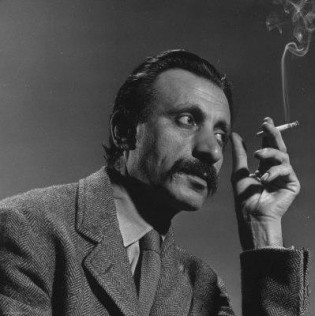
Arshile Gorky
Abstract Expressionism looked for the role of emptiness. Of what has gone missing in the technocratic corporate neo liberal societies of the West. It strikes me as particularly relevant today. But more than anything, I believe the ernest even naive sincerity of these painters, their belief in their own artistic discipline, to be what bothers many critics, critics who increasingly provide tacit support for U.S. global policy. On the right the fear of abstraction in general is born of a need to validate their own ignorance. Realism is important because it provides ratification of the status quo. That George Bush, who knew he could paint so darn good. For the educated classes it is the sincerity, and the revolt against authority, against mass man, and the soul deadening instrumental world view of academia and bureauractic hegemony that paradoxically foments this affluent class resistance to Ab Ex. These works lack the requisite cleverness. For the hard left, somehow, without a clear message, the earth underfoot becomes too unstable. The collective must be provided moral instruction, and political instruction, for there is no time for introspection.
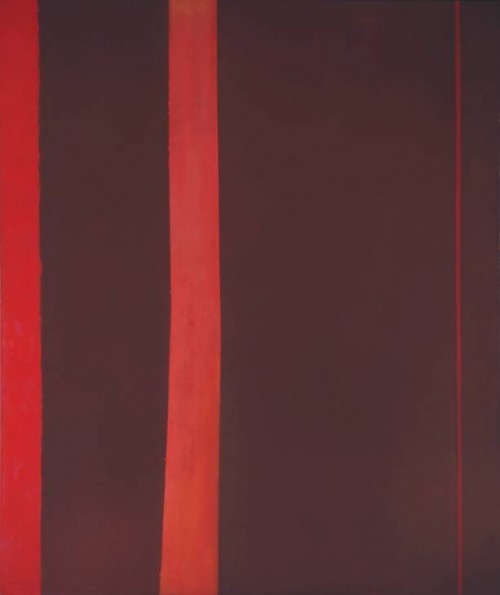
Barnett Newman
It is interesting today to examine trends, popularity, and who is selling, who isnt, whose reputation is rising, etc. Neo Expressionism went into a stark decline for a while, but I suspect is resurfacing, and probably it should to some degree. But these labels are problematic, firstly, and secondly the idea today, taken from critics like Hal Foster and the late Craig Owens, is that in fact sincerity is so five minutes ago. In fact they take a position that modernism is and always was overrated. The problem for me is that Cindy Sherman, or Richard Prince, seem very trivial indeed. And I think I am probably arguing for a restoration of what was good in modernism. The Neo Expressionists for example, so passe’ for a while, are no doubt ready to be reclaimed soon by University art departments. I cant believe the best of that work wont survive, even if the large majority of it was indeed quite bad. But the purposes of this post, the anti expressionist stances of critics like Owens and Foster ends in a sort of post modern cul de sac in which irony replaces pretty much all else. When in doubt, be ironic. The self promoting aspect of Ab Ex painters may be worth criticizing, but it shouldnt be confused. It wasnt ‘self promoting individualism’. That again is allowing Greenberg and Rosenberg to set the terms of the discussion. For there are always two levels at work (almost always, and probably almost always five or six more than that) with artworks…basically the reproduction and emotional expression of our own childhood trauma and mental development and maturation, AND the meditation on, and engagement with history, with our civic selves, and the ruins of the collective social past. Those traces are part of what fascinated both Adorno and Benjamin. The use of mass produced banality, in the production of ironic individually created mass banality is in the end only the reproduction of banality. The raw material of mass culture today is its own topic, it is solipsistic, and self referential without historical perspective. What gives a work like the Still, at the very top of this post, a resonance is that is cleary stands as a
totem, a powerful energy beam of uniqueness, and this because of the deep energy that went into its making. The security guards at the Modern may not like it, may not “get it”, but that only speaks to a culture trained NOT TO SEE what is front of them. Its odd because I always hear the voice of FOX news when I think of ordinary white men (sic) — and the seepage of masculine power, potency, and strength as unions and collectivity and community were erased. Roger Ailes is poster boy for the pushing of resentful self loathing narrow minded mental phlegm as news-tainment. But I digress slightly.
I fear the onslaught of electronic corporate media has desenitized the viewer. The loss of education in the arts has erased a heritage of learning, which had become emdedded on a personal level in communities, but those communities are gone. And all that is left is an ever more atomized and isolated and reified collective. One used to and anticipating more banality.
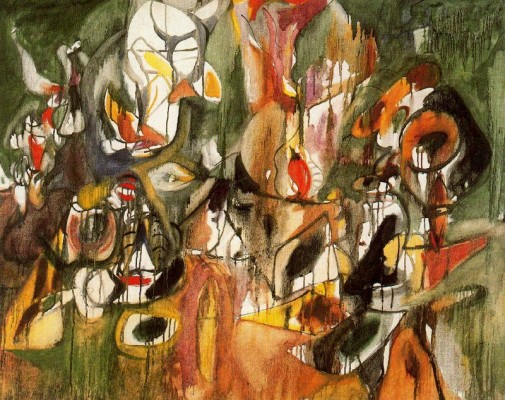
Arshile Gorky
“Matters of this sort could only have been done at two or three removes, so that there wouldn’t be any question of having to clear Jackson Pollock, for example, or do anything that would involve these people in the organisation. And it couldn’t have been any closer, because most of them were people who had very little respect for the government, in particular, and certainly none for the CIA. If you had to use people who considered themselves one way or another to be closer to Moscow than to Washington, well, so much the better perhaps.” Donald Jameson, CIA case officer.
Hugh Wilford and several other critics still see Ab Ex painters as useful to the CIA because, BECAUSE, they were mostly Marxist leaning and displayed non conformist attitudes. (Never mind the artworks, who needs that….) And that somehow the CIA was smart enough to calculate that the leftish bourgeoise of Europe would prefer Rothko to “Roses for Stalin”. This is precisely the problem, in a nutshell. I’ve had different people over the years say to me, “oh its common knowledge the CIA created Abstract Expressionism”, or “The CIA did it to deflect attention away from Diego Rivera the REAL political artists”, and on and on. These same people, and I can think of five or six over the years, also all said their professor had told them this. So here you have another example of bad education. Unsophisticaed junior college instructors, from inferior schools, and even often from up market institutions, relaying a simplistic distorted history, in the name of a sort of insider cool liberalism. And what happens is that great work, transformative and *radical* work is neutralized. This is how the Spectacle handles radical work, today. It markets it as its opposite. Or it just ignores it. For you see its not hard to find the “message” in, say, Diego Rivera, or in Norman Rockwell for that matter, and its far more enjoyable to write about Andy Warhol or Jeff Koons, or Damien Hirst, because the material is familier. Campbell’s soup cans, Marilyn Monroe, or Michael Jackson, and seriousness begins to be equated with the U.S. state department. Art cannot be written about anymore as the experience of art, the engagement with it. It is always a strategy. Analyse the message and repackage the message as criticism. Wilford and a host of others view matters from a deeply instrumental pov, and they sort of engage with matters of aesthetics from a Marketer’s logic. Nobody looks at the work. This is what Meyer Shapiro discussed, what Adorno worked so hard to explain. And why dissecting instrumental reason was and is so crucial. If you think like a cop or junior high school principle, or an advertising executive, then yeah, you are going to examine currents at work that effect sales, not aesthetics. And such scenarios always give too much credit to agencies run by people like Allen Dulles. These are not fucking geniuses. Dullus was a wealthy provincial with markedly narrow tastes and interests. Much as today, its important to remember Suzanne Nossel, or Samantha Power, or James Clapper, or Richard Holbrooke, or Marc Grossman, or Susan Rice et al are not any of them very smart. You hear that about Obama,too, oh gee, ran the Harvard Law Review. Again, that requires a certain sort of political acumen, and ability to turn off individual feelings. It is a certain kind of narrow smart. Adaptive. It is the company man. Period. Company men are most often prone to sadism, and we can see that now clearly enough. THAT’s the actual propaganda. Samantha Power is a boot licking rodential little woman who shapes herself to fit the needs and desires of her masters. The real political import, and certainly the spiritual, has to do with the awe, the emotions, the awakening of something resistant to domination, that is the product of engagement. It is the exercise of a refusal to authority, to conformity, and to repression and control. Art doesnt create revolution. But it affects the individuals who make revolutions.

Jackson Pollock
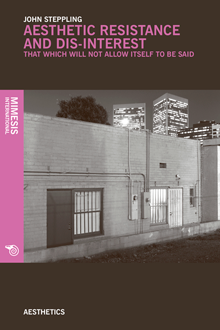
Although I hate to get all sentimental and I differ with you slightly on your aversion to irony and to Andy Warhol (after all I have a foot and an arm in advertising) the abstract expressionists really do deserve a special chapter of love and attention when you set about to examine the zeitgeist in Amerika and how it’s evolved. One thing worth mentioning is that these were WPA artists and the New Deal was paying them in the 30’s to paint, as in, make abstract expressionist art and not just the social realist murals so familiar now (exclamation point exclamation point). Of course the New Deal had many enemies and was as hated at the time in certain quarters as is Obamacare is now. I also heard, though do not know where it is written, that many paintings from their time as New Deal artists were later cut up during the war when there was a dearth of cotton, and used as insulation for pipes in the New York City subways.
yes, WPA. I think this gets forgotten a lot. The working class character of this movement. I understand because they were co-opted in terms of their commodity value, but I think its such a huge disservice to the entire American cultural landscape to dismiss these artists as just dead white men, macho at that. However, they werent paid TO paint abstract, if thats what your saying. As if these guys really wanted nothing more than to paint murals. They internalized mural traditions and thats one of the reasons they were all drawn to very large surfaces, big canvases. The WPA/FAP allowed them to do what they wanted. There were painters, and there were craftsmen, and they overlapped. But Gorky, who i think was one of the guy employed by the WPA, called social realism poor art for poor people. There were advocates for social realism in the WPA administration in fact. Pollock and Rothko et al hated the Ben Shahn ‘realism’ as essentially barren and boring. Pollock was a pupil of Benton remember, so Still and Pollock both in their early work did this sort of primal Benton-esque ‘western lands’ sort of realism. Anyway, the WPA allowed these artists to live and work. DeKooning designed shoe displays for a department store, until his WPA job, and Gorky got a big mural commission for Newark Airport…IF he agreed it was not going to abstract. Here justin wolf writes “One of the greatest success stories during the early years of the FAP was that of Arshile Gorky. Between 1935 and 1937, Gorky worked for the Mural Division and was paid a little over $2000, or the equivalent of $103.40 per month.
In November 1935, head of the Mural Division, Burgoyne Diller, assigned Gorky to draw some sketches for the Administration Building of Floyd Bennett Field in Brooklyn, NY for a mural devoted to aviation. The stipulations for the mural, dictated by the FAP’s regional director, stated that it should incorporate “early legends and stories of man’s aspiration to fly in a romantic period … [portraying] the first attempts to build flying machines, through a combination of painted and photo murals.” Having never traveled in an airplane, and appalled by the notion of realistically depicting aeronautic history, Gorky wanted to give viewers a sense of flying rather than simply depicting people in airplanes.”.
This is a quote…but i cant find by who…..”Experimental art, like Trotskyism itself, was a minority current in the 1930s. They were both reactions to Communist politics and culture. Against “socialism in one country,” Trotskyism posited world revolution. Against “socialist realism” or the “proletarian novel,” artists and intellectuals friendly to Trotskyism posited surrealism or novels like “Studs Lonigan,” which depicted working-class life in unsentimental terms. Trotsky made his opposition to art as propaganda clear when he praised Céline’s “Journey to the End of Night” as “great literature.” As a weary bourgeois figure, Céline was “so disgusted by his own image that he smashes the glass until his hands bleed.” Shortly after this review was written, Céline became a supporter of Hitler.” Most leftists i know would recoil at admiration for Celine’s work, and that in a condensed form, is the problem in leftist aesthetics today. The anti communist obsession of the US government used whatever it deemed usefull, but these werent critics, they were just people following various advisors…and there grew this consensus around Ab Ex, which was mostly hated by the bourgeoise and the left (who were busy buying ben shahn work and other cliches)alike. Truman and later all presidents and senators etc, hated abstraction. But peggy guggenheim and clement greenberg had created a market. Its a funny contradictory narrative.
John,
Thanks for this sensitive and thoughtful reflection on the lasting importance of AbEx. I was fortunate to have studied with both Donald Kuspit and David Craven, and seeing my writing quoted with such reverence as you have done validates my life work. Such positive commentary is rare, especially since we live in a climate in which such validation is well nigh impossible to locate.
There is a seething tenacity that broils beneath the scumbled surfaces of Still, the meditative calm of Rothko, the steely aggression of Kline, the formulaic variety of Gottleib, Pollock’s lexicon of gestures and the mathematical intervals of Newman’s zips. These artists would not fit in well with today’s emphasis on socially engaged art.
But, we must emphatically state, they lived it. They drank and fought together as a collective committed to reducing the ratio between labor and leisure so that both existential poles could be equally experienced. One’s sacrificial toil and ecstatic joy should be in direct proportion to each other; instead we have a fascist police state that arrests those who turn off their televisions and assume the right to express themselves in the mirage spaces of the public sphere which are legally protected as private property. The AbEx artists fostered various quasi-geographical communities (the Club, Cedar Tavern, eastern Long Island etc.) that celebrated and encouraged differences of political opinion, stylistic strategy and painterly technique. They may have epitomized the existential angst of the tortured and suffering modern artist as hero; but simultaneously, they demonstrated how artists establish communities that celebrate our shared humanity, not due to what we hold in common but, more importantly, by that which sets us apart.
Just today I presented to my undergraduate students the work of Haring, Wojnarwowicz, Basquiat (even Schnabel, Fischl and Salle) because they are eager to know if painting remains relevant, especially when they desperately wish to challenge the “Samo shit” results in a supportive network of artists defying Barack Obama’s utilitarian pragmatics that reduces one’s education to a rapacious instrumentality that denies work that satisfies one’s soul even at the expense of struggling to cover one’s rent. Obama’s apology to a practicing art historian was as clumsy as his “off-the cuff” comments disparaging art history as a profession of value in today’s society: “art history was one of my favorite subjects in high school, and it has helped me take in a great deal of joy in my life that I might otherwise have missed.” How wonderful for Obama to have attended a high school that offered courses in art history. Few do. Such study in our teen age years is a luxury.
But, what your post reiterates, and what I strive to emphasize, is that art can alter the world, even if the incrementalism of art’s ability to change how we experience reality is gradual. Reality is a construct, and those who are taught the devious and slippery methods of social sculpture (thanks, J. Beuys) realize that they can change their society, even if they will not be compensated for doing so. This deck of cards stacked against them is no deterrence–they persevere. And the AbEx artists validate such a risky proposition.
So, thanks John. Your post makes a difference because it emboldens me to continuing soldiering on (even as I question whether or not to use my scant resources to support a democratic president who violates my political beliefs).
Brian Winkenweder, Ph.D.
Chair, Department of Art and Visual Culture
Linfield College
Surprised you didn’t mention Hyman Bloom.
Hyman Bloom
Hyman Bloom, a twentieth-century painter occupies a pivotal position in the emergence of abstract expressionism in the United States. With his death in August 2009, there has come increasing recognition that long after he was called “the greatest artist in America” and subsequently retreated to Nashua, NH, he has much to contribute to the contemporary art scene. His move from abstract expressionism to spiritual expressionism may transform the moniker which was hung on him by Jackson Pollock and Willem de Kooning as “the first Abstract Expressionist artist in America” to become the first Mystical Expressionist in the beginning of the twenty-first century after a period of relative neglect.
Bloom was a close friend of the composer Alan Hovhaness and the Greek mystic painter Hermon di Giovanno. The three of them often met together to discuss various mystical subjects and to listen to Indian classical music. Bloom encouraged di Giovanno in his art, providing him with a set of pastels with which he executed his earliest paintings.
Joanna, he wasnt mentioned because he was very minor. And a not really an influence per se. His later work veered toward something else……(spiritual expressionism?…um…) that was connected to Jewish kabalistic imagery etc. But there are tons of guys….sam francis, or Morris Louis, or even Lee Krasner…..but the core originary group are those listed above….and those are the guys who shaped the movement. But Hans Hoffman, or certainly Guston, or Motherwell or Joan Mitchell would likely all have made the list ahead of Bloom. That group interacted, and they shared beliefs, and and a moment in time, and even a geographic area. But everyone has their opinions on who is germane.